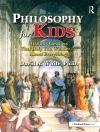Teaching IS rocket science—and you are the pilot!
Teach Reading, Not Testing reinforces what teachers already know—test preparation worksheets and drill-and-kill activities do not make children into lifelong readers. The authors′ conscientious approach to reading instruction combines an insider perspective on the development of high-stakes tests with classroom experience in achieving successful reading outcomes at the elementary and secondary levels. Their research-based methodology, building on teachers′ expertise about best practice, is based on five key components:
Included are end-of-chapter quizzes and real-life scenarios, plus a full chapter on teaching literacy with special populations. Readers will find helpful solutions for teaching children to love reading in the midst of the accountability movement, and an approach to test preparation that doesn′t require teachers to sacrifice everything they already know about teaching kids to read.
表中的内容
Foreword by W. James Popham
Acknowledgments
About the Authors
Introduction
1. Conducting an Alignment Study
Conducting an Alignment Study
What Is Alignment?
Teaching to the Test: Just Say No
Key Points to Remember
End-of-Chapter Quiz
2. Using Formative Assessments
What Does Formative Mean?
How Are the Scores of Test Takers Analyzed?
Differentiated Instruction
Tests as a Snap Shot: The Jacuzzi Metaphor
DIBELS
Test Quality and District Assessments
End-of-Chapter Quiz
3. Struggling Readers
Accommodations Versus Modifications
Modifications and High-Stakes Tests: Alternative Assessments
Accommodations and High-Stakes Tests
Assistive Technology (AT)
Response to Intervention (RTI)
Differentiated Instruction (DI)
English Language Learners (ELLs)
End-of-Chapter Quiz
4. Attitude and Motivation
Motivation Research
Incentives
Goal Setting
What to Do If Your Principal Wants to Use Pizza Parties to Bribe Students
The Use of Practice Tests: Preparation or Motivation?
Test Preparation: Analyzing Tests as a Reading Genre
Communicaton With Stakeholders
End-of-Chapter Quiz
5. Engaged Independent Reading
Connect Your Reading Units to Real-World Contexts
Teaching Students to Read for Pleasure
Reading at Home: W.E.I.R.D.
What′s the Deal With Boys?
Literature Circles and Book Clubs: What Is Normal in the Real World?
Best Practice for Book Clubs
Summary
End-of-Chapter Quiz
6. Best Practice
What Do Quality Inservices Look Like?
Theory and Practice at the Elementary Level: Best Practices Primer
Know What Works for You
End-of-Chapter Quiz
7. Implications for Your Teaching and Beyond
Holding Your Ground
Test Misuse in the Early Days of Testing
The Need for a Supportive Principal
No More Teaching to the Test
Next Steps
Final Thoughts
Resource A: Answers to Quizzes
Resource B: Five Ways to Teach Vocabulary
General Glossary of Assessment Terms
References
Index
关于作者
Hilleary Drake has taught fifth grade for six years in Riverton, Wyoming. Growing up in Texas during the initial wave of the “testing craze” she understands just how harmful it can be when testing drives instruction. She earned her undergraduate degree from Texas A&M-Corpus Christi and her Master’s degree from the University of Iowa. While at Iowa she worked with Iowa Testing Progams as a graduate assistant, gaining behind-the-scene knowledge of the testing industry. Hilleary enjoys reading, traveling, and spending time with friends and family, especially her husband Jay.












